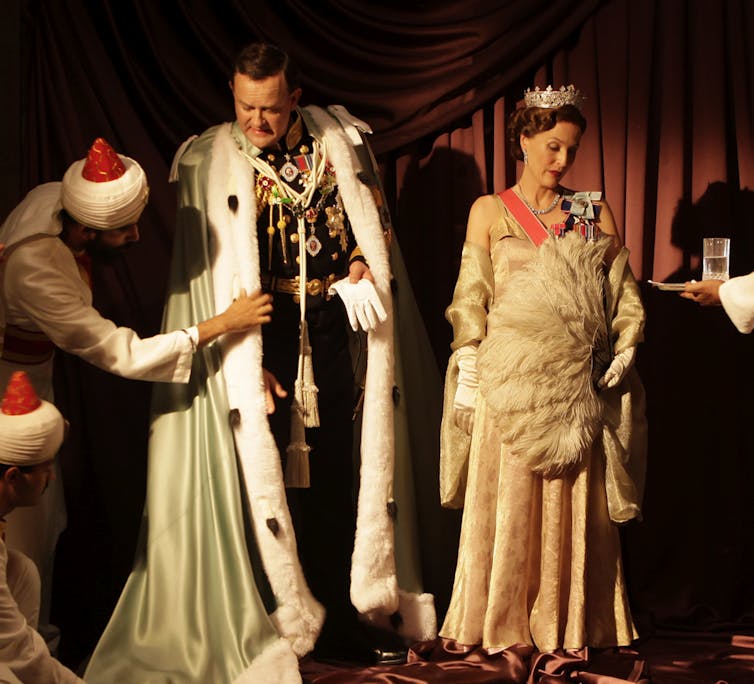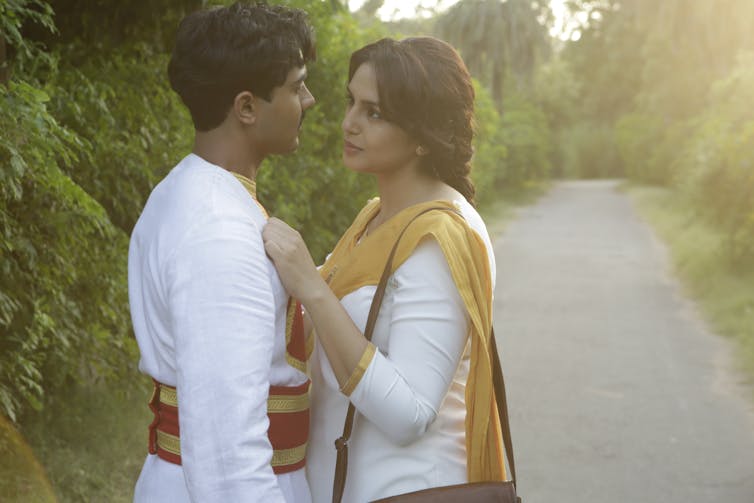You may be forgiven for thinking that Downton Abbey has returned – and gone a little rogue. The grandiose Viceroy’s House has rolled into cinemas with Hugh Bonneville at the helm and featuring a central upstairs/downstairs narrative. But this is not Downton-Abbey-in-India. This is Gurinder Chadha’s latest film, an account of the traumatic process of Partition to mark the 70th anniversary, this year, of Indian independence.
This is certainly an interesting approach for a film promising to deal with such a fractious and complex topic as the Partition, and works to varying success. Chadha’s film is an absorbing, although not always representative, melange of Partition-related politics and period drama. This combination makes for a heady visual cocktail, but doesn’t quite hit home.

Previous cinematic meditations on Partition, such as Deepa Mehta’s Earth and Pamela Rook’s Train to Pakistan (both 1998), grappled with the ground-level horror of internecine genocide and gruesome civil conflict. Viceroy’s House treads a very different path, opening a window on the inner workings of its titular edifice – the home of Lord Louis Mountbatten, the last British viceroy to India. Gurinder Chadha’s film explores how Partition’s theatre of tragedy unfolded from the stage of this building’s opulent chambers.
Upstairs, Downstairs
Unsurprisingly, Bonneville takes on the role of Mountbatten, the man sent on a mission to oversee transference of autonomy to India. Gillian Anderson delivers a masterful performance as Edwina, his independent-spirited and left-leaning wife. Their domestic domain is painted as a mini “nation” divided between an elite upper-deck of political decision makers and a substratum of Indian servants who wait on them. The house serves as an interesting microcosm of the rising tide of inter-religious strife of an India on the precipice of irrevocable change.

Chadha uses the building itself very effectively. She often positions characters within doorways: symbols of transition and change. Decision makers, movers and shakers are foregrounded, while the expendable proletariat Indian servants are mute observers, relegated to overhearing snippets of conversations between their colonial overlords.
This gossipy relay of news to servants “downstairs” ignites instantaneous vituperation, discord and seething hostility among Hindu, Muslim and Sikh staff. Upstairs action tends to result in downstairs reaction – and friction overwhelms bonhomie as they start to pin their allegiance to either India or Pakistan. Such deterministic action can seem a reductive and simplistic rendition of a monumental and catastrophic event that was a tangled web, rather than just knee-jerk reactions to top-down executive decisions.
The diminished character development afforded some of the characters downstairs (particularly the chefs) is another grey area. Such fleeting sketches of some of the inarticulate servants in Viceroy’s House could be construed to represent a colonial silencing of marginalised Indian voices.

But portraying the house as a mini nation certainly opens up new ways of considering the events – and the film’s pomp, pageantry and visual splendour all contribute to its grand spectacle and sense of period.
A new history
Then there is the attempt to humanise the central historical and political volatility of the house by adding a fictional narrative to the film’s main thrust. This is in the form of a cross-religion romance between two members of staff – Jeet (Manish Dayal), Mountbatten’s Hindu personal valet and Aaliya (Huma Qureshi), a Muslim translator for Mountbatten’s daughter, Pamela. A nice idea, but this Bollywood-esque trope of star-crossed lovers attempting to bridge the Hindu-Muslim schism seems contrived – simultaneously stilted and schmaltzy.

Other forays beyond traditional history – scripted “by the victors” – are more successful. The film does not flinch from indicting the British attempts to Balkanise India through its divide-and-rule policy – and it goes beyond strictly accepted history in order to do so.
Chadha’s research included a tip from Prince Charles to read a book he believed shone a light on “what was really going on”. This led Chadha to The Shadow of the Great Game - The Untold story of Partition, written in 2005 by Narendra Singh Sarila, the Maharaja of Sarila and Mountbatten’s aide-de-camp. Sarila had stumbled on top-secret documents from 1945 revealing Britain’s anxiety about granting strategic territories to India. He also found a map for Partition that had been drawn up by the British government as early as 1946.
The documentary evidence and revelations from Sarila’s book punctuate the film. An electrifying moment indicts Winston Churchill as a villainous manipulator who masterminded a backroom deal with Muslim League leader Muhammad Ali Jinnah. The film reveals that Churchill promised the Muslim leader to carve out the Pakistan Jinnah desired through an arbitrary drawing of borders, unbeknown to the unsuspecting and well-meaning Mountbatten.
Drawing from Sarila’s discovered documents and his widely cited revisionist account, Viceroy’s House argues compellingly that Churchill’s clandestine deal was created to protect British oil interests in the Persian Gulf. In this way, after Partition, the port of Karachi would safely fall within a new and grateful Pakistan, rather than an independent socialist India. To support this contention, the film alludes to Churchill’s other line-drawing and nation-dividing activities – Ireland and Palestine are named.
One of the most potent scenes features General Hastings Ismay (Michael Gambon) revealing to the flabbergasted viceroy that his Mountbatten Plan will be framed in posterity as a prepackaged deal done before Mountbatten ever set foot in India. A bitter and disillusioned Mountbatten eventually remarks to Jinnah that Churchill has acted as “midwife to Partition”.
So, although it sidesteps the complexities and stark realities of bestial violence that pervaded Partition, Viceroy’s House is, in the end, a watchable film. The alternative history of the Viceroy’s mansion encourages appreciation, albeit sanitised, of the well-intentioned Mountbattens, who tried to understand, embrace and love the country their forebears had only commandeered, oppressed and colonised.

